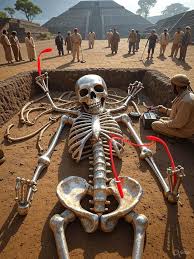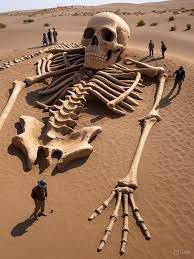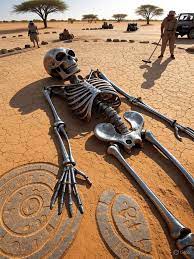Oversized Skull Skeleton Emerges from Machu Picchu Hidden Chamber—Peru’s Forbidden Relic Revealed
The headline “Oversized Skull Skeleton Emerges from Machu Picchu Hidden Chamber—Peru’s Forbidden Relic Revealed” is a fictional and sensationalized claim. No such discovery has ever been reported by any credible archaeological team or official Peruvian authority. The language used, such as “oversized skull” and “forbidden relic,” is a classic trope in online hoaxes and pseudo-archaeology, designed to tap into popular fascination with ancient mysteries and alien-related theories.

In reality, Machu Picchu has been extensively studied since its re-discovery by Hiram Bingham in 1911. While the site is full of incredible architectural and archaeological wonders, there are no hidden chambers or burial sites containing mysterious skeletons. Archaeological research at the site has yielded the remains of individuals, but they are consistent with the physical characteristics of the Inca people, a population known for their skilled stonework, not for any unusual physical traits.

However, the region around Machu Picchu and the Sacred Valley of the Incas is a very real source of ongoing and fascinating archaeological discoveries. The city itself is an enduring mystery, with debates continuing about its exact purpose—whether it was a royal estate, a religious sanctuary, or a strategic military outpost. Modern research, often using non-invasive techniques like LiDAR, is constantly revealing new information about the extensive road systems, agricultural terraces, and smaller settlements that supported the majestic city. The true “forbidden relic” is not a skeleton, but the endless stream of unanswered questions and genuine secrets that Machu Picchu continues to hold about the Inca civilization.
